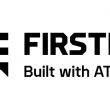Now the fun begins
Once a system has been designed, engineering has been completed, the licenses have been received, the equipment has been delivered, and the sites have been obtained, it is now time to start the installation. In the old days, equipment often was thrown into place haphazardly and many sites looked like people’s basements. That no longer is the case. Once the cellular telephone companies showed the land-mobile-radio industry what orderly installations should look like, the LMR industry responded. Now, all installations are implemented to standards and the radio sites do look and perform better. Most site managers today will not allow sloppy installations.
Some of the manufacturers have their own installation standards, while others do not. Regardless, all radio systems should be installed neatly, using good engineering practices. In this article, we will discuss some of these good engineering practices.
As stated in earlier articles, you must have secured the permission of the site manager or site owner to be on the premises. Also, the placement of the equipment should already be pre-determined before it arrives at the site.
The placement of the equipment must consider the cabling that goes to the wall-mounted external connections, ground leads, RF cables, CRT or computer interfaces, and interconnections to other racks in the same system. Many sites have overhead cabling racks for routing the cables, while other sites have raised floors and the cables are routed under the floors. Before bolting down any equipment, ensure that every cable path and other installation parameter is well-thought-out before you commit to the rack location. Other items to consider are: heating and air conditioning ducts and vents; the potential for water dripping on the equipment; access space and aisle space for people and other equipment at the site; lighting; and the need for adequate space to allow further equipment to be added to the site.
Depending upon whether a factory staging was conducted, the equipment should be staged — with all of the system components in one room or physical location — and the entire system should be tested. If this was performed in the factory, then this step can be omitted in the field. If this was not done in the factory, or you have equipment coming from more than one manufacturer, then you should not skip this step. It is much easier to correct system problems when all of the equipment is in one location. You will not want to do the system staging once you start placing equipment into the assigned locations. It is much better to do this in the early stages of the installation or during pre-installation.
The installation starts by ensuring that the equipment racks or cabinets line up in the row in which they are placed. In addition, the racks or cabinets must be leveled in the place where they are to be mounted, even if the floor is not level. The level must be tested in all three planes (X, Y, and Z). The bubble of the level must be within the lines, even if the adjacent racks are not level.
The method used to secure the racks or cabinets to the floor should be done per the site manager’s standard. Several options are available:
- Bolts to the floor.
- Bolts to anchors in the floor.
- Studs protruding from the floor.
- Double-sided foam tape.
- Casters on the bottom of cabinets.
- No anchoring device.
Sometimes, the site manger does not care what method you use. In some cases, they don’t want use to use any anchors at all. Regardless, as the installer, you must ensure that the equipment is not going to be damaged by somebody just leaning on the rack or cabinet.
If you happen to be in a region that has a history of earthquakes, or has earthquake-zoning requirements, you must ensure that the equipment installation follows the guidelines for that region.
It is very important that installers have the proper tools to do the installation. In addition to tools, the installers must have the proper personal safety protection equipment while working on the system. This includes safety glasses or goggles, hard hats, insulated tools and proper shoes. It is imperative that they wear no metal jewelry that can cause short circuits on the power leads.
As your tools age or get used, they lose some of their effectiveness. Replace worn or damaged tools before you have an accident. Also, a fully charged fire extinguisher should be available. No job or part of the job is so important that you cannot take the time to do it in a safe manner.
As you test the equipment, it is important to establish that it meets specifications. Just because a piece of equipment is new and just out of the box does not mean that it is working properly.
As you start wiring the various pieces of equipment together, be very careful to avoid putting any wires in the wrong place. It is very difficult to find wiring errors once you finish an installation. If you use the plastic wiring wraps that keep the wires in place, there are two rules to observe. These are:
- Do not make the wraps too tight.
- Cut the ends of the plastic ties off flush.
If you have any of the following RF-tuned components in your system, then you need to use a tracking generator to confirm that the tuning and performance of each is done correctly:
- Duplexer.
- Transmitter combiner.
- Receiver multi-coupler.
- Cavity filter.
Just because one of these components is new and has a sticker on it saying that it is “factory tuned” does not make it so. You must check each and every one of these components every time, or you will suffer unexplained system problems that could have been easily resolved.
Besides the inside wiring, there are standards for the antenna part of the installation. For instance, a return loss sweep should be conducted for each antenna, transmission line, RF jumper and lightning protector. For the transmission line, a distance-to-fault (DTF) sweep should be performed before the pieces are put into place. In addition, a passive intermodulation test (PIM) should be done on each component. Again, the cellular radio people have shown the LMR industry how important it is that the components be able to pass the PIM tests.
Once you have the antenna and lines in place, a system sweep should be performed on the antenna system. You should perform these sweeps before the antenna installers put the waterproofing material on any of the junction connections. Once you are 100% sure that the antenna system passes the return loss and the distance-to-fault tests, then the junctions can be sealed. Do NOT use the plastic heat-shrinkable tubing that comes with the antenna connectors. Instead, always use outdoor-rated plastic electrical tape covered first by butyl rubber, then by electrical tape, then by liquid rubber, and finally by more electrical tape, in order to ensure that moisture does not ingress into the connection. Because of the physics property called “capillary action,” you only need a gap the size of one molecule for water to have a path from the outside to the interior of the connection.
The next step in installing a new system, or an addition to an existing system, is to perform a functional test of the system, to ensure that the system design is correct.
Once you have verified that the system is functioning correctly, it is time to conduct the preliminary acceptance test, which will demonstrate whether the audio and RF components are working properly. The following describes a common issue that occurs at this juncture:
The factory technician, during the system staging, skips the fine audio and RF signal adjustment, because he assumes that the field technician will accomplish that step during system optimization.
The field technician/engineer, at the system installation/optimization, skips the fine audio and RF signal optimization because he assumes that the factory accomplished that step and it is not necessary to repeat it in the field.
The net result is that there are hundreds of systems in use now that were never fully optimized.
Consequently, it is a good idea to have an independent third party review the final acceptance test procedure before it is performed, in order to ensure that ALL components and system operational items are covered. It also is a good idea for the third-party reviewer to be present for the actual acceptance test session.
The system installation is not complete until all of the documentation is completed. This includes an accurate inventory of all equipment, the exact location of each component of the system, the interconnection cabling diagrams, the power diagram, the grounding diagram, and all other documentation on each and every item that was purchased for the system. In addition, the level-setting procedure and all of the documents that relate to the maintenance of the system should be readily accessible. Good documentation will make it easier for the maintenance technicians and engineers to keep the system in good working order going forward.
Next: An in-depth discussion of project management, including what should be included in the factory acceptance test, coverage acceptance, and the final acceptance test.
Part 1: Class is in session: Basic LMR and FCC definitions
Part 2: Start at the beginning: Understanding LMR user needs
Part 3: The devil’s in the details: Conducting a user-needs survey
Part 4: Decisions, decisions: Understanding the LRM procurement process
Part 5: Let’s get started: System engineering begins with RF planning
Part 6: The lynchpin: Receiver planning and noise interference
Part 7: Connecting the dots: How to connect LMR sites
Part 8: The next piece of the puzzle: Understanding dispatch communications
Part 9: Now the real work begins: How to select a suitable LMR site
Part 10: The bane of your existence: How to deal with RF interference
Part 11: Winning the battle: More causes of RF interference.
Ira Wiesenfeld, P.E., is a consulting engineer who has been involved in the radio communications business since 1966. He is a senior member of the IEEE and has been a licensed amateur radio operator since 1963. He can be reached at [email protected].
Robert C. Shapiro, P.E, is the senior manager-systems engineering for Cassidian Communications, an EADS Company. He serves on the TIA TR8 committee as TR8.18 vice chair and is a senior member of the IEEE. He can be reached at [email protected].

















